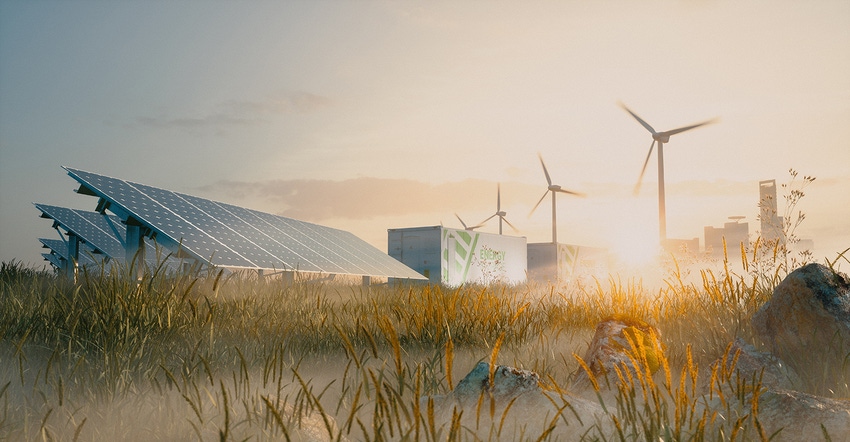Rural Clean Energy: USDA's $2.3 Billion Initiative Unveiled
Explore USDA initiative driving clean energy in rural communities. Discover investment impact and innovative energy storage solutions.

The announcement by U.S. Department of Agriculture (USDA) Secretary Tom Vilsack at the National Rural Electric Cooperative Association’s PowerXchange indicates significant progress toward advancing clean energy initiatives in rural communities across the US. With a focus on reducing pollution and strengthening the rural power grid, the Biden-Harris Administration’s investment of $2.3 billion underscores its commitment to affordable, reliable, and clean power.
“Rural electric cooperatives are the backbone of America’s power delivery, and the Biden-Harris Administration is committed to helping them create a cleaner, more sustainable future that lowers energy costs and creates jobs and lasting economic prosperity for people everywhere,” Secretary Vilsack stated.
Diversifying the energy mix and investing in resilient infrastructure is critical for ensuring energy security, mitigating climate change, and promoting economic stability. By incorporating various renewable sources alongside traditional fuels, nations can reduce dependence on volatile energy markets and mitigate the environmental impacts of fossil fuels. Resilient infrastructure, including smart grids and energy storage systems, enhances the ability to withstand and recover from power outages caused by extreme weather events and cyberattacks, ensuring continuous access to power.
Energy storage solutions for rural electrification
The announcement's focus on energy storage underscores its pivotal role in facilitating the renewable energy transition. The market for battery energy storage systems is growing rapidly, and according to McKinsey & Company, the global BESS market will reach between $120B and $150B by 2030, more than double its size today. For example, Tesla has seen growth in its energy-storage business, with deployments increasing 360% year-over-year to 3.9 GWh.
Through the Powering Affordable Clean Energy (PACE) program, USDA is allocating funds to support projects integrating energy storage solutions into rural electrification efforts. For instance, the following applicants have been chosen to advance in the awards process:
Trico Electric Cooperative Inc. in Arizona aims to secure $83.5M to expand its battery energy storage system capacity, ensuring reliable electricity for the growing population around Tucson and the Pascua Yaqui Reservation. This funding aligns with the cooperative's objective to reduce carbon emissions by 50% by 2032.
La Plata Electric Association in Colorado seeks $13.4M to slash annual energy costs by over half a million dollars and provide affordable clean solar energy to its members, including those in distressed, disadvantaged, and energy communities, as well as residents of the Ute Mountain Ute and Southern Ute Tribal reservations.
Kauai Island Utility Cooperative in Hawaii is pursuing $24.4M to enhance solar energy production and diminish reliance on fossil fuels during peak evening hours in Anahola, Koloa, and Port Allen. This initiative will generate employment opportunities, bolster the local electric grid, enhance resilience against climate change, and support the cooperative's objective of achieving 100% renewable energy by 2033.
The village of Emerson in Nebraska is requesting $1M to finance a solar facility and improve energy distribution efficiency for the Winnebago Tribe.
Midwest Electric Cooperative Corporation, also based in Nebraska, is seeking nearly $17M to finance solar renewable energy resource facilities and energy storage systems for communities in Wallace, Grant, Paxton, and Lakeview.
“Building a new local solar facility paired with battery storage will bring jobs to our community and generation closer to our homes and businesses,” stated Jessica Matlock, CEO of LPEA.
Energy storage systems can provide a dependable power supply, particularly in rural regions that frequently encounter unique obstacles in accessing reliable and affordable electricity. Investing in energy storage innovation holds the potential to reduce costs, enhance efficiency, and accelerate the adoption of renewable energy technologies nationwide.
Through investments in rural electrification projects, the administration not only addresses these challenges but also drives economic growth in these areas. Generating employment opportunities in developing and maintaining clean energy infrastructure contributes to the prosperity of local economies, promoting a more robust and sustainable future for rural communities.
About the Author(s)
You May Also Like





